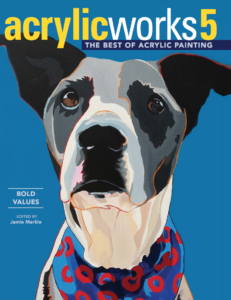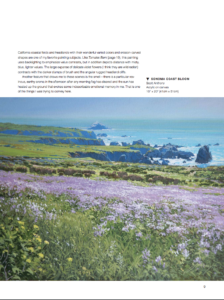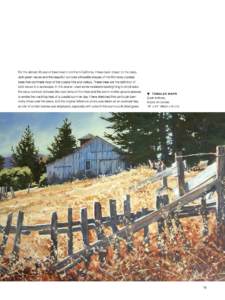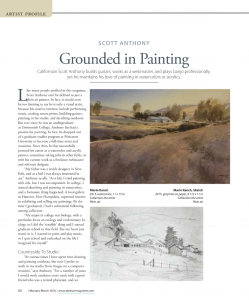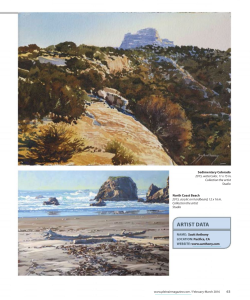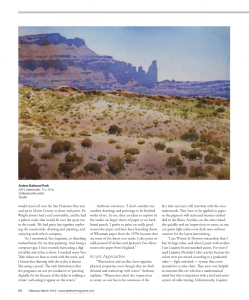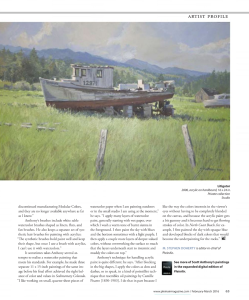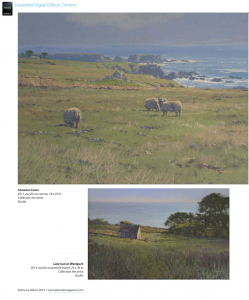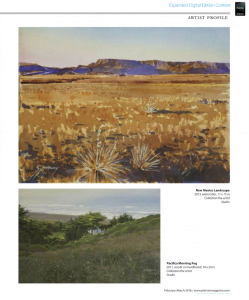Vintage watercolor paper problems
A few years ago, after quite a long layoff from painting, I got the back room in our condo set up as my new studio and took up the brush again. It has felt great getting back my watercolor “chops” (as they say in the music performance business), but a few major, alarming problems became apparent almost immediately.
The first problem was anticipated and was fairly easily remedied but moderately costly. Watercolors in tubes, no matter how tightly capped, dry out over a few years and are almost impossible to rescue. Sometimes the tubes can be cut open and the pigment removed and re-wet, but this is a messy and tiresome process so purchasing new paint was easier.
The second problem was something that I could not have imagined and I am still working on solving.
First, some background: During the mid-80s when I was still represented by a couple of galleries and had some moderate art income, I purchased a couple of hundred sheets of great, handmade French watercolor paper: D’Arches 300 lb. cold-pressed. The D’Arches brand (now just “Arches” for some reason) was and still is one of the leading fine watercolor papers. At the time, in hundred-sheet quantities, a 22″ X 30″ “full-sheet” was about $3.50, making it a great deal then. I still have 75 or more sheets that now retail for $15 to $20 each.
One more piece of background: All good handmade watercolor paper has a substance, usually gelatin, called sizing that is either applied to the surface (external) or part of the liquid in the “slurry” (internal) that eventually dries into a sheet. The sizing controls how hard the paper surface is and how fast water and paint soak in. For example, blotting paper has little or no sizing.
Normally, when I paint a watercolor landscape, I start with the sky by first wetting and soaking the sky area of a fresh sheet of paper with a sponge before applying various blue and gray washes. This “wet-in-wet” technique allows the cloud colors and “blue-sky” areas to have soft edges. To my initial horror, areas of the sheets of my old stock of fine paper behaved like blotting paper, leaving ugly, impossible to fix, dark areas where the color soaked almost all the way through the sheet! It was obvious that the sizing had disappeared from these randomly sized (no pun intended) and positioned spots on the sheet.
As I mentioned above, I am still trying to solve this problem so that I do not have to just throw away a stock of valuable and, under normal circumstances, great paper. I have tried brushing a very diluted mixture of acrylic matte medium and water onto a wet sheet of paper, but I have yet to get the dilution correct so that the surface is not too resistant to water.
Stay tuned…
